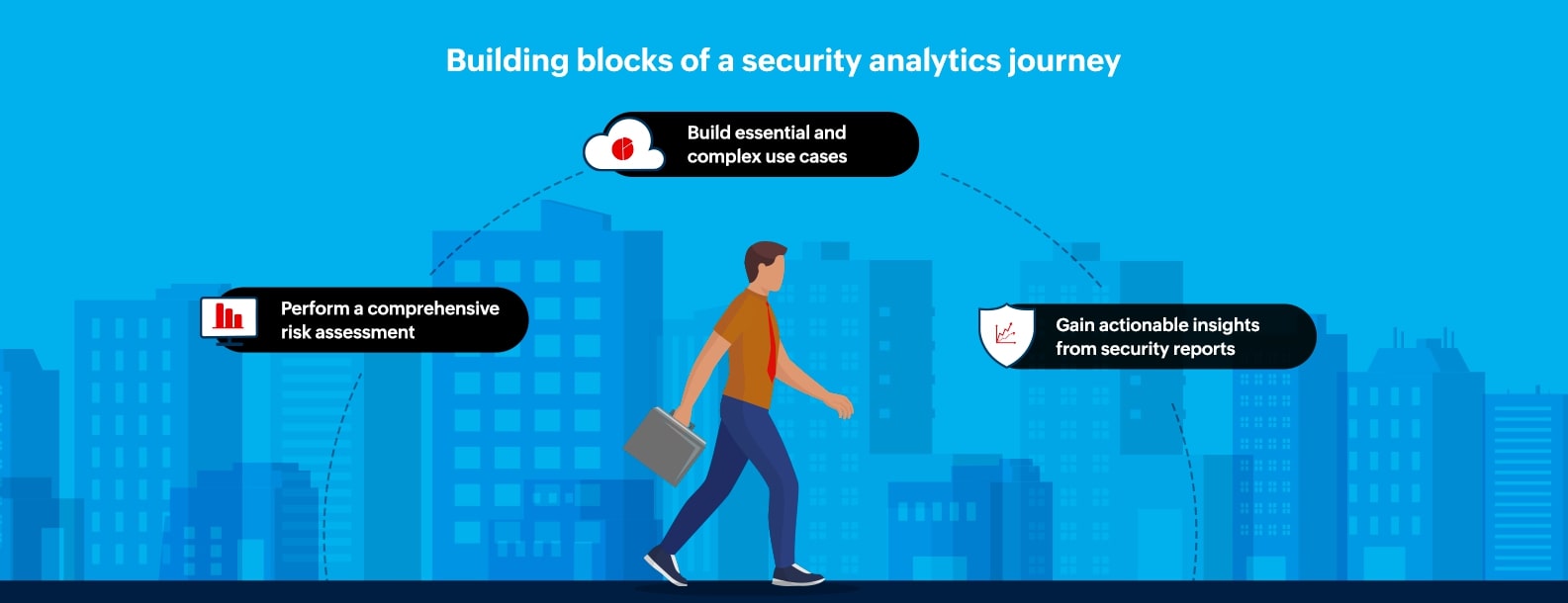With the ever-evolving threat landscape, cyberattacks have become more targeted. Adversaries are spending considerable time in the initial reconnaissance phase where they try to find out as much as possible about their intended victim. No organization, big or small, is immune to cyberattacks.
In such a risk-filled environment, it is not enough for security solutions to just collect log data from across the network and notify administrators in the case of an event. They should also be able to go several steps further to:
However, to accomplish all of the above, organizations should come up with a clear approach for analyzing the huge amount of data they receive. Only then can they extract meaningful insights from it.
Often, organizations beginning their security journey are aware of the state-of-the-art security tools they need but are puzzled about where to begin. In this blog, we will cover three fundamental steps you should follow to kick-start your security analytics journey:

NIST defines risk assessments as the process of identifying, estimating, and prioritizing risks to “organizational operations (i.e., mission, functions, image, and reputation), organizational assets, individuals, other organizations, and the Nation, resulting from the operation and use of information systems.”
Organizations need to perform frequent risk assessments to understand the different potential cyberthreats and vulnerabilities that exist in the network. They also need to consider the impact on their business in case of a security breach.
Performing risk assessments helps organizations prepare for the worst and prioritize the threats and weaknesses of the network.
An organization that tries to do everything at once runs the risk of not doing anything well. This is especially true for organizations starting their security journey. Building constructive use cases can act as a starting point for such organizations since they give a definite and impactful head start. Focusing on particular use cases that are most relevant to the company can lead to a better security posture. These use cases can be one of two types: essential or complex. Either way, they have to be relevant to the organization's needs and also address the compelling challenges the organization is facing.
Essential use cases include fundamental defense components and are common for almost every organization.
Here are some examples of essential security use cases:
Complex use cases include unique situations where a specific challenge needs to be addressed.
Here are some examples of complex security use cases:
Developing insights from security reports is an unequivocal step in the security analytics journey that organizations cannot afford to skip. Without being able to make sense of the collected data and extracting actionable insights from it, the entire process seems futile.
SIEM solutions should be able to provide detailed reports about each use case (essential or complex) defined by organizations. They should also be able to generate in-depth risk assessment reports to help organizations prioritize events and determine which of them requires further investigation. Imperative questions like the who, when, where, what, and how of an event should be addressed. Organizations should get a comprehensive report that highlights all the major events so they can better understand the threat situation and prepare their defense strategies accordingly.
A SIEM solution like ManageEngine Log360 provides coherent, comprehensive visibility across the network with its advanced security analytics and detection capabilities.
Try a free, 30-day trial of Log360 today to test the solution for yourself!
You will receive regular updates on the latest news on cybersecurity.
© 2021 Zoho Corporation Pvt. Ltd. All rights reserved.